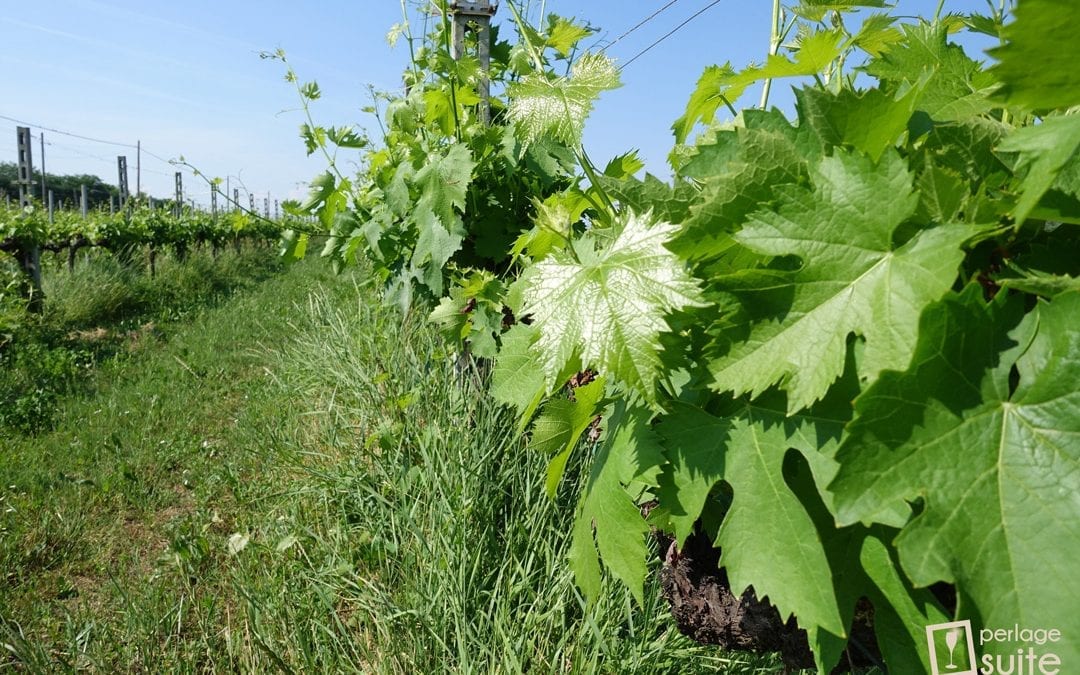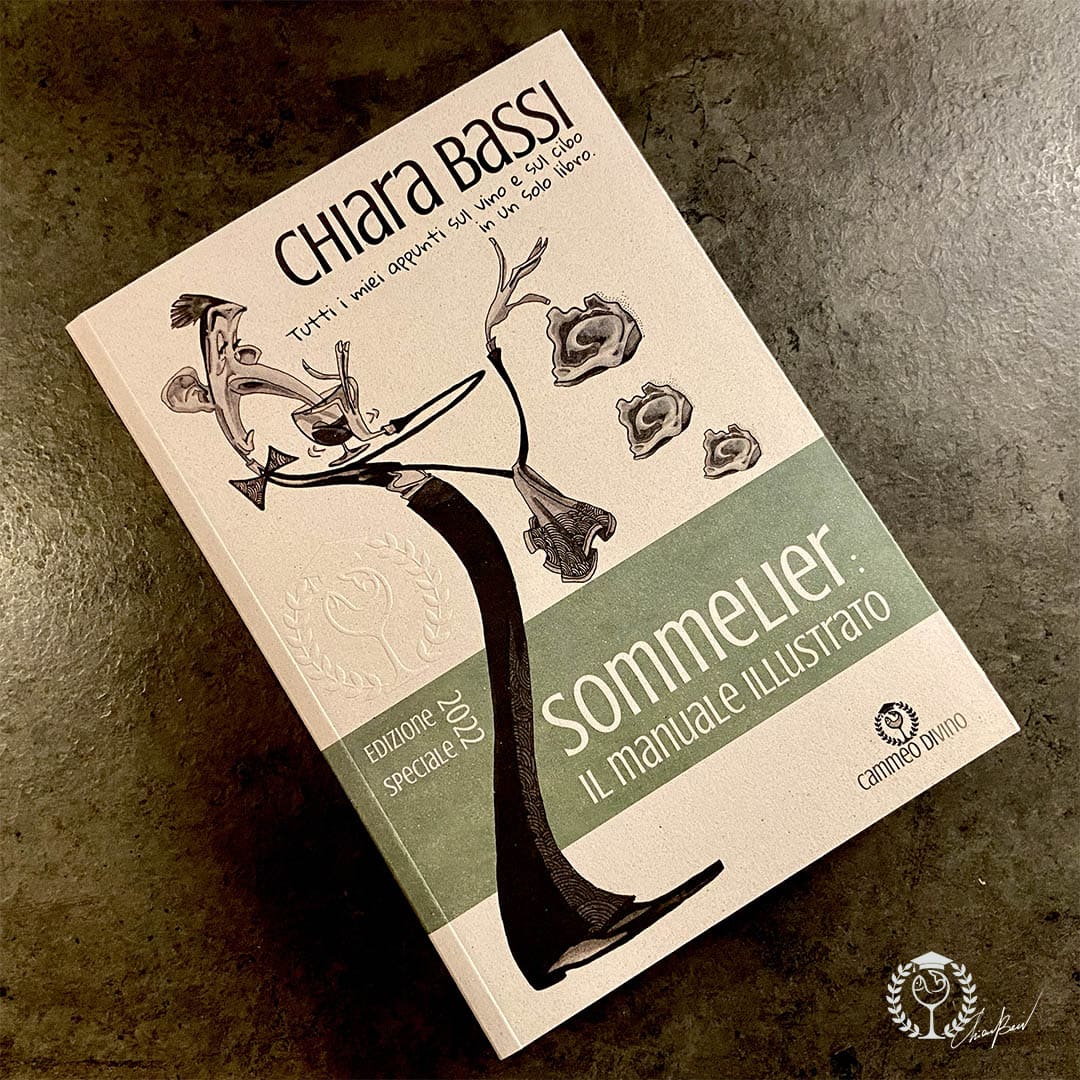Tonight I have decided to write an in-depth study for aspiring sommeliers on the screw from its reproduction to its cultivation. First of all, let us clarify that when we talk about wine grapes we mean the vitis viniferawhich originated in South Asia about a million years ago. Understanding how vines are cultivated is fundamental to tasting wine with knowledge, so I invite you to dwell on this subject with care... my side I promise I will do my best to be as uninteresting as possible! 😝🙃 I remind you that this article is collected on the page EDUCATION, second chapter "Wine“.
The vine is a climbing plant with very long roots which serve to anchor the plant to the soil and obtain everything it needs for growth and fruiting. If, due to a long drought, the soil becomes very dry, the roots go down to a depth of almost 6 metres to find water and nutrients.
In order to reproduce new vines without using the seed (grape seed), which would lead to vines with characters that differ significantly from the mother plant, you can use one of these techniques:
- TALEA = Take a 1-year-old shoot with at least 2 buds and plant it vertically in the ground. This will form roots in the lower part and a shoot in the upper part which will give rise to the rooted vine. This is how vines are born free foot (= with original roots), with high quality characteristics, balanced production over time, less vigour and more characterised fruit, but has one major limitation: little resistance to phylloxera.
- INNESTO = Join two pieces of shoot, one of which has at least one bud. Almost all young vines are now made from a European vine variety grafted onto an American foot (rootstock) or Euro-American hybrid (phylloxera-resistant).
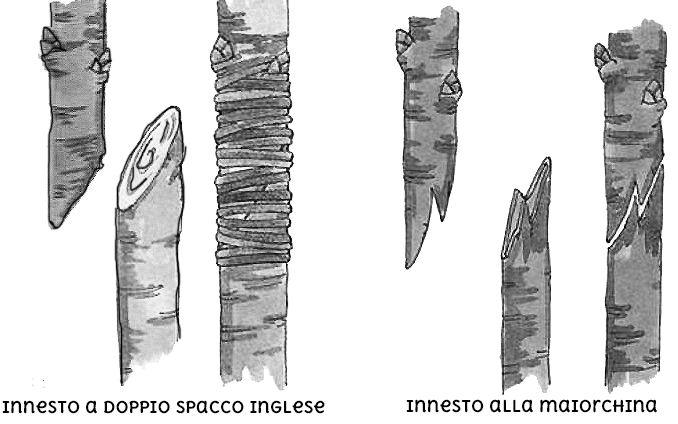
ENGAGEMENT Techniques:
- DOUBLE SLIT ENGLISH (OMEGA) = Used in central and northern regions, it is made at the table to prepare a rooted cuttings that will undergo one year of rooting in the nursery, to develop small roots with variety and rootstock (bimembre). ADVANTAGES: very precise union of tissues, possibility of eliminating vascularly unhealthy plants, perfect constitution of the new vineyard.
- ALLA MAIORCHINA (IN GEMSTONE) = Used in the southern regions and islands, it is made from January to February directly in the vineyard on a rootstock planted in September of the previous year. ADVANTAGESWide range of varietal choices of buds on an already well-rooted rootstock.
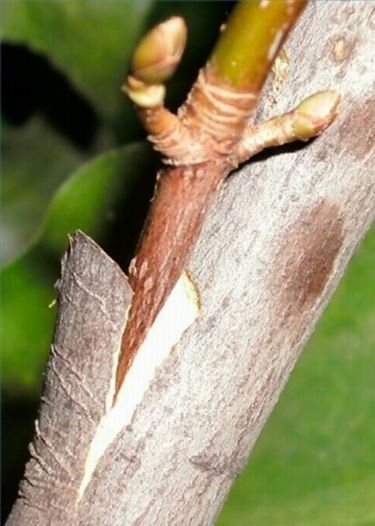
And now let's talk about a subject that all drinkers who want to spend less than €3 on a bottle of wine should know about: the cycle of the vine. Planted in the vineyard, the vine is unproductive until 2-3 years of age. In this period he prepares for the peak productivity phase, which lasts up to 20-25 yearsvaries according to grape variety, training system and climate in different years. After 25-30 years of age, the vine begins to grow old and produces less and better quality fruit. There are various types of vines with different characteristics; these are called vines. There are vines with high and constant productivity like merlot and trebbiano and vines with low and inconstant productivity such as Nebbiolo and Picolit. Obviously, vines with low and inconstant productivity produce more 'valuable' grapes than those with high productivity!
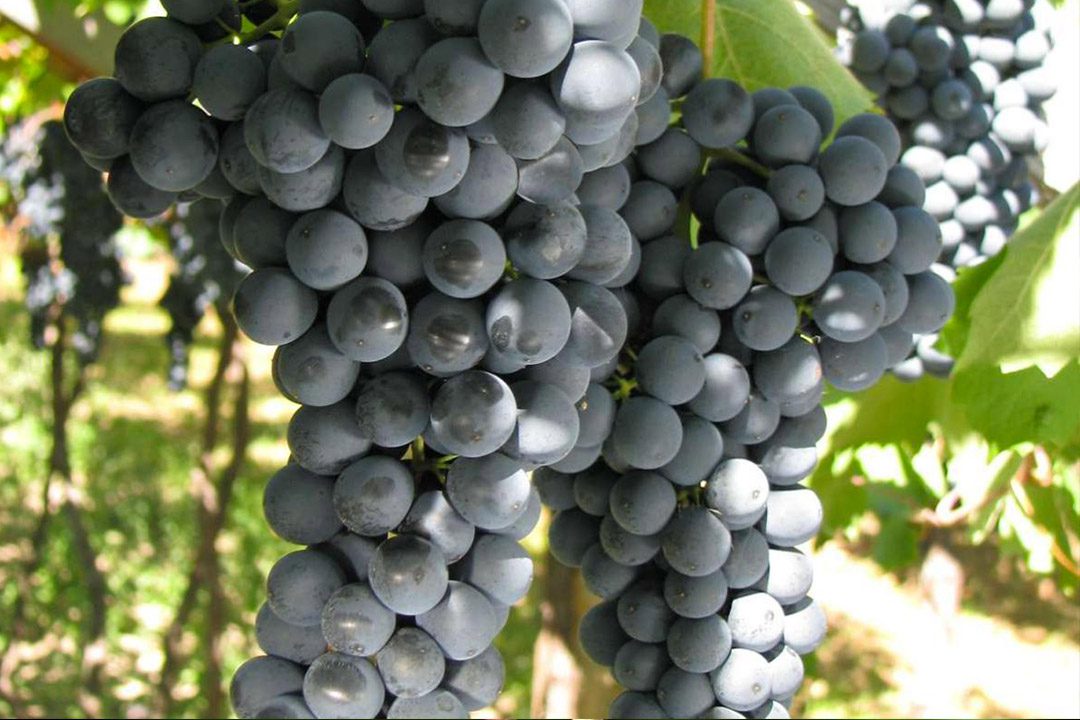
Grapevine: Annual cycle
After the grape harvest, the vine enters its resting phase, the leaves change colour and then fall. In spring, new shoots are formed, from which the bunches that will be harvested between summer and autumn will grow.
Vegetative sub-cycle
Ibegins in March, when the ground warms up. In the vine, the sap flows up the trunk and from the places where pruning has been carried out, droplets of the sap itself can be seen leaking out. This phenomenon is also called vine weeping. The vegetative sub-cycle consists of 3 phases from April to December:
- SPROUTING = From April to August, the buds open, leaflets form and the shoots elongate. At this stage it is evident if the winter cold has caused damage, which is evident if some buds do not sprout. If the weather is fine and warm during these months, the vine grows steadily and resists pest attacks more easily, whereas if there are sudden drops in temperature, these can cause damage to the younger shoots to the point of death.
- AGOSTAMENTO = In August, the shoot matures and the processed substances are stored as plant reserves. Slowly, until the end of November, the shoot turns brown and woody.
- DEFOGLATION = Between the end of November and December at the same time as the beginning of the resting phase.
Production sub-cycle
Between April and May, the first bunches are formed while the differentiation of pollen and ovules for fertilisation begins. The production sub-cycle consists of three phases from mid-May to mid-August:
- FLOWERING = From mid-May to June, the flowering period loads the stems with inflorescences. Flower opening and fertilisation can be hindered by cold and wind. If fertilisation is imperfect, seedless berries are born and the cluster does not develop, with berries remaining cold and immature.
- ALLEGATION = This is the initial phase of fruit development following flowering: in flowers where flowering has taken place correctly, due to the division and distension of the cells by hormonal impulses sent by the grape seeds, the berries develop and begin to increase in weight and volume. During this phase, the berries are still green and very hard.
- INVAILING = Between mid-July and August, the ripening of the berries begins. The berry only swells due to the distension of the ovary cells, accumulates water, concentrates sugar and extractives in the pulp, while the skin turns yellow or blue. Ripening ends between mid-August and the end of October, depending on the grape varieties, which can be early (pinot, chardonnay...) or late (barbera, cabernet sauvignon, nero d'asola, nebbiolo, cannonau, negroamaro...).
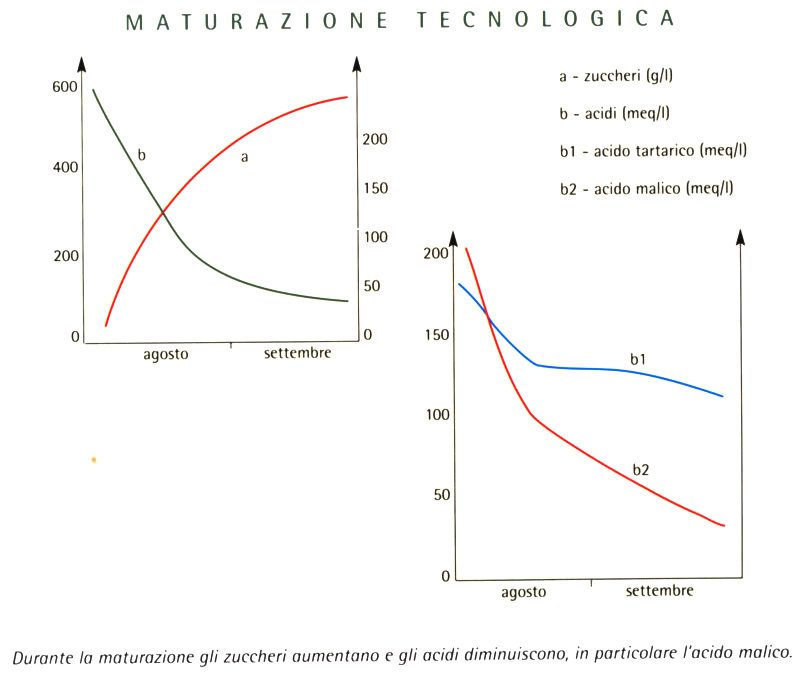
Grapes: how does grape ripening work?
This period is absolutely magical! The berries swell and turn colour, the pulp softens and concentrates the sugars, especially the fructose that partly replaces glucose. Normally in fruit, fructose is much greater than glucose, while in grapes glucose and fructose have practically identical percentages. The yeasts that carry out alcoholic fermentation process glucose more quickly, which explains the ease with which spontaneous fermentations can occur, e.g. due to indigenous or wild yeasts present on grape skins. These fermentation processes sometimes cause the formation of unpleasant secondary substances such as acetic acid which, being volatile, causes a pungent, acrid smell. During ripening, acids decrease, especially malic acid, which is sour and aggressive and is present in grapes that are not fully ripe. Tartaric acid, on the other hand, is essential for the acidity of the must and must remain.
Allowing the grapes to over-ripen leads to an increase in the phenolic component, which contributes to a more structured and tannin-rich wine, at the slight expense of a full, compact colour. The optimum is when technological maturity and phenolic maturity COINCIDE under the condition of an excellent adaptation of the vine to the soil and climatic environment and an excellent seasonal development.
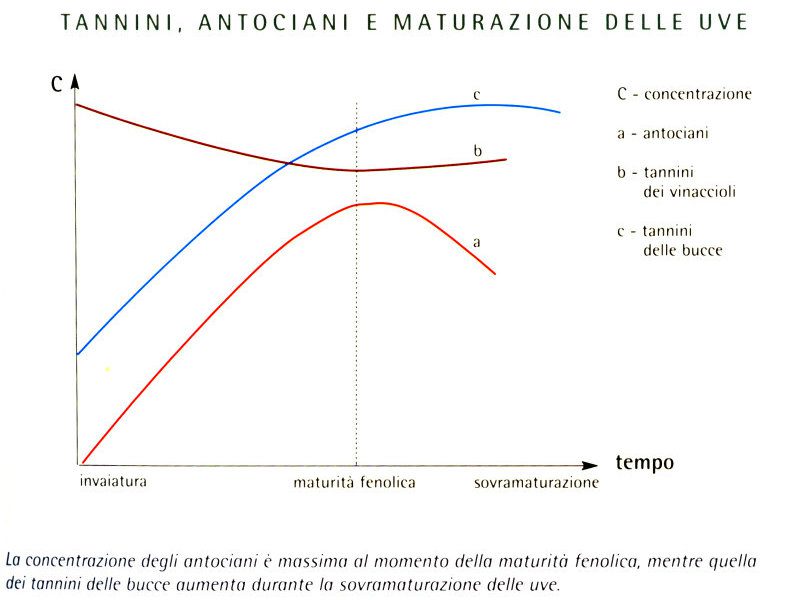
Grapevine: technological maturation
The technological maturity of the vine is assessed on the basis of the ratio between sugars and acids. Consequently, in order to favour the production of a must richer in fixed acids, especially in hot areas, the harvest is somewhat earlier.
Grapevine: phenolic ripening
Phenolic ripening of the vine involves the grape phenols that are most concentrated in the skins and seeds. When the grapes reach this stage of ripening, the membrane of the skin cells is in the optimal situation to allow maximum dissolution of the phenolic components in the must, especially the anthocyanins (which are 'responsible' for the colour of red wines).
Grapevine: aromatic ripening
Aromatic ripening is linked to the accumulation of varietal aromas, especially of the terpene group. These substances can be free in the pulp and thus perceptible even by chewing a grape, as in the case of Muscat, or they can be bound to sugar molecules to the point of becoming volatile and thus perceptible to the nose as a result of hydrolysis reactions in the must and wine. The accumulation of aromatic substances in the skins tends to increase during ripening and then decrease if ripening is prolonged. The ripening of grapes depends on many factors such as the exposed leaf area, the grape/stem weight, the number and density of berries in the bunch, the availability of water in the soil, etc.
Throughout the annual cycle, the vine can run into various problems that can result in the loss of the crop or the death of the plant itself:
- CLIMATE = The vine is a delicate plant that suffers winter cold, spring frost, hail... Prolonged drought or excessive rainfall can cause water stress or root asphyxia that damages or slows down its development;
- MUSHROOMS = Downy mildew (wet and rainy climates), powdery mildew (dry and sultry climates)... are very dangerous fungi for vines. Botrytis cinerea, like all moulds, damages grapes, but at a particular stage of development and climatic conditions gives extraordinary results in wine;
- INSECTS = Spiders, moths, cicadas cause damage to vegetation or production. The leafhopper (Scaphoideus titanus), which feeds and grows by stinging the leaves and sucking their sap, has created many problems in recent years as a vector of the dreaded GOLDEN LEAF, which leads to a slow degeneration of the plant until its death by constriction of the vascular vessels;
- PARASITES = FILLOSSERA (in the next photo leaves devastated by this pest) and NEMATODI (small worms living in the soil) cause root damage or can transmit virosis such as leaf crumpling, curling or suberosis.
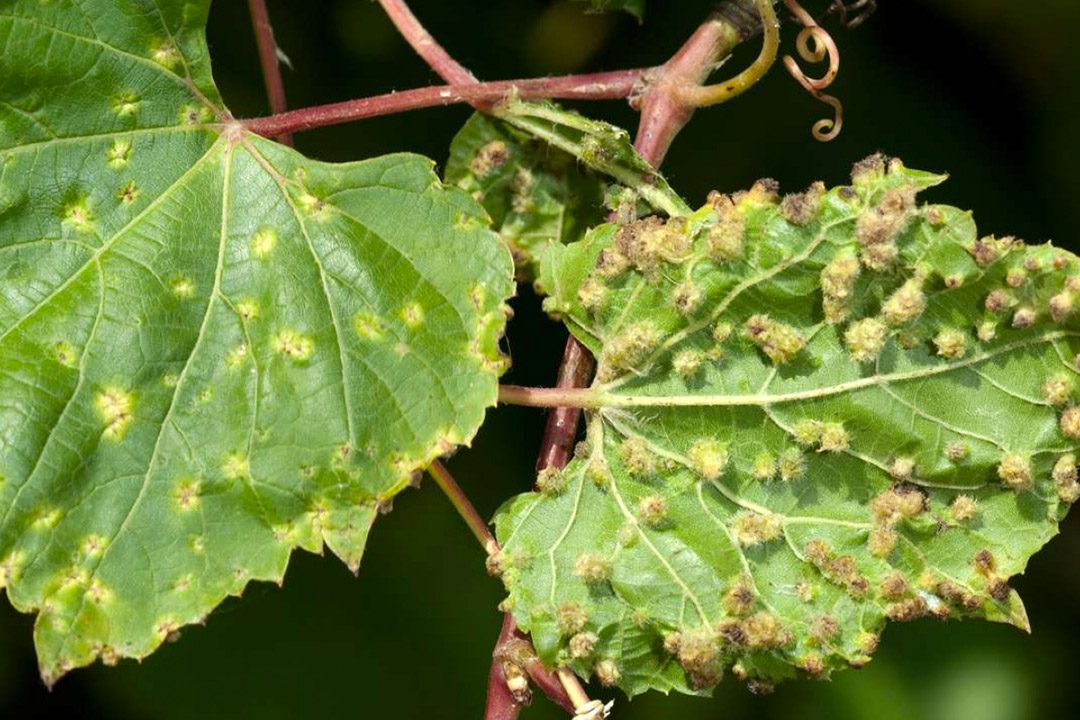
Grapevine: Cultivation
- Conventional = Use of all types of product necessary to safeguard the cluster.
- Integrated fight = Limited or absent use of certain active ingredients in order to contain the destruction of insects normally present in vineyards, exploiting precisely their competitive action against all pathogens, taking into account factors linked to the environment and cultivation techniques capable of reducing pest development.
- Organic = It excludes the use of herbicides for weed control and synthetic chemicals for plant protection. Only interventions based on copper and mine sulphur against downy mildew and powdery mildew respectively, clay and sulphite-based formulations against Botrytis cinerea and Bacillus thuringensis against insects are permitted.
- Biodynamics = It stems from early 20th century Steiner models in which importance is given to soil balance and seasonal energy forces. Very few chemicals are used and beneficial insects are respected as a symbol of life in the vineyard and only suitable areas are used with the aim of achieving maximum diversification in the aromas of the fruit and the taste of the wine.
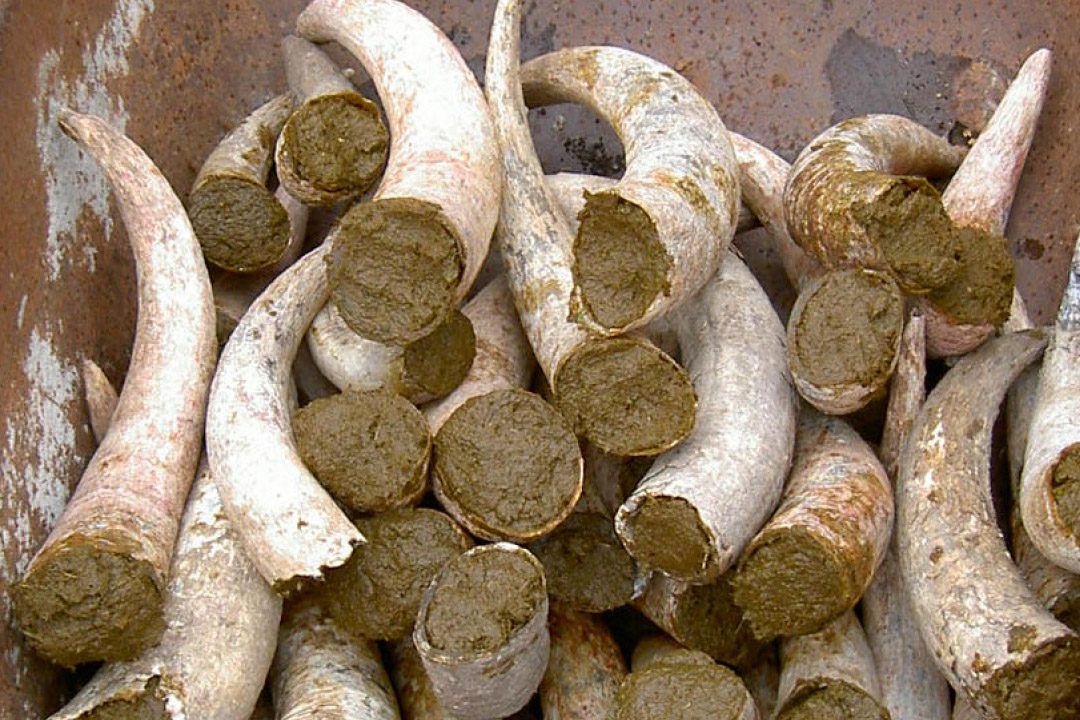
Frankly, the use of horns stuffed with manure to rebalance the energy waves of the vineyard does not convince me much... 'Preparation 500' is obtained by putting cow poo inside a cow's horn that has given birth at least once (and if it is called a cow, it means that it has given birth... if not, it was a cow... or was it?). The horn manure is buried in winter and resurrected at Easter, when it is 'dynamised', i.e. mixed with water and sprayed to increase the productivity of the vineyard. Hey gentlemen, it certainly doesn't hurt... but for me it's like believing in unicorns (to stay on topic 😅)! But don't mind me even being ignostic because agnostic wasn't enough for me... in fact I'd be glad if you could explain what biodynamics is for you in a comment! Ah for those who don't know... I think many because I have never heard anyone call themselves ignorant in 34 years and even the MacBook corrector keeps correcting them as agnostic... the difference between agnostic and ignostic is that the former says 'I don't know whether God exists or not' while the latter says 'for me to ask whether God exists is meaningless until one can experience it'.
Well, this in-depth study is also concluded... I sincerely hope you find it useful!
Cheers 😍🍷
Chiara

